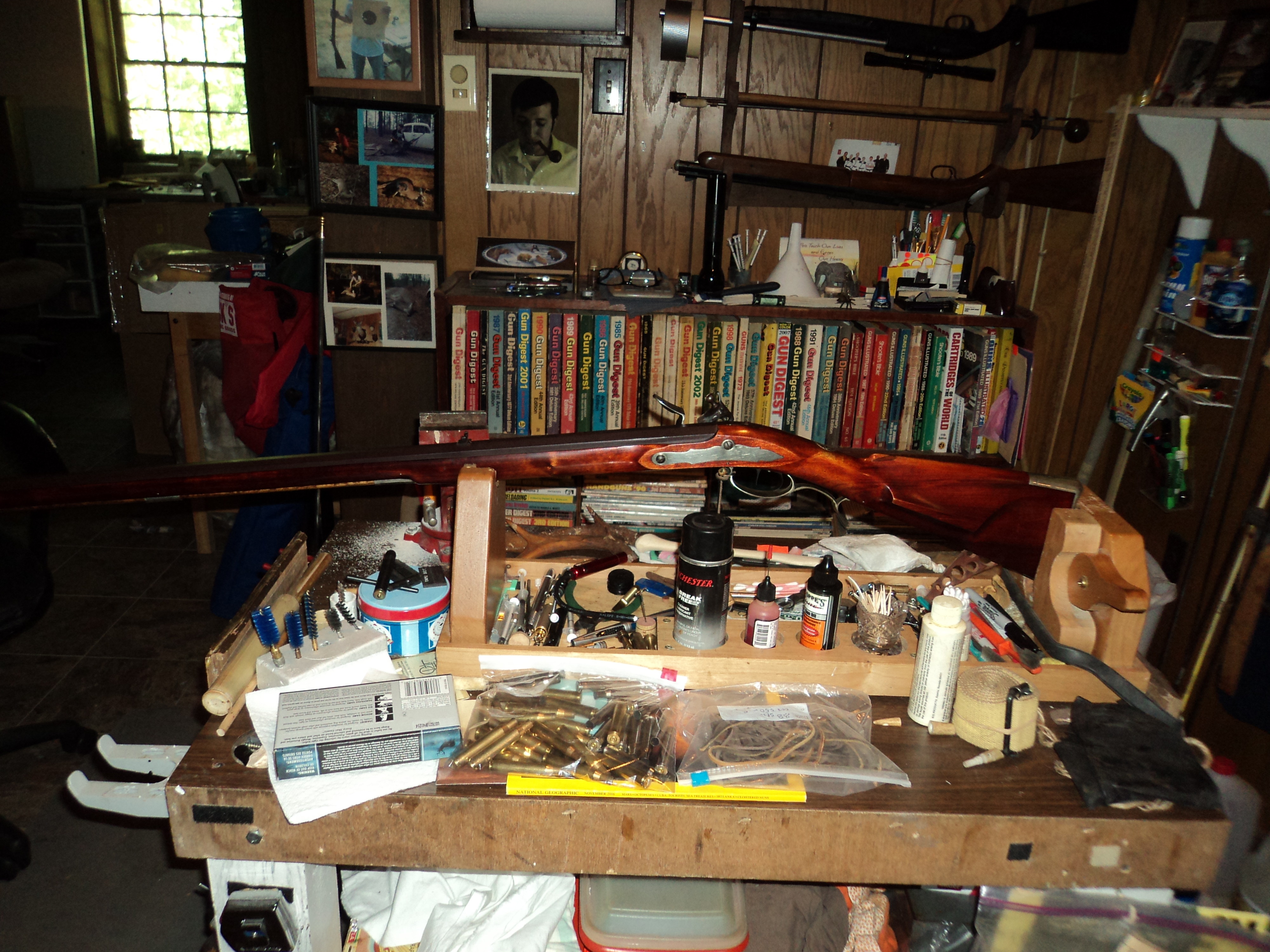Smokepolehall gave you some good advise.
I'm not familiar with the Traditions Deerhunter, but I do have several .50's, both flintlock and percussion. My hunting load in all my .50's is 70 grs. of 3F real black powder with a patched .490 round ball. But, that is just what works for me with my rifles. (Think about it. If that was a cartridge load it would be a .50/70, but with round ball ballistics, of course.) And, I can honestly tell you that load will shoot completely through a deer, broadside, out to at least 75 yards. I've done it many times.
I do not take any shots at big game beyond 75 yards with my muzzleloaders.
However, you will need to try plenty of different loads until you find what works best in your rifle. As Smokepolehall said, you might start out with 50 grains of either 2 or 3F and work up in 5 or 10 grain increments to 90 grains, or even 100, although I doubt you will need or want that much.
I prefer 3F because I can also prime with it. I don't use a special priming horn, because I just prime right from my regular powder horn. That just eliminates an extra item that I don't have to carry. Some say that you can prime with 2F, but I haven't tried that. I think 2F is a little coarse for priming, but I suppose it would work.
Different ball sizes and patch thicknesses all can make a difference in your rifle's performance. You will just have to experiment. A .495 ball, patched, is usually a tight fit. A tight fitting ball is often an advantage when doing some precision target shooting, but of course can also be used for hunting if it works in your rifle. In one of my flintlock .50's even a .490 ball is a very tight fit. So, I now use a .480 patched ball in that particular rifle.
As for cleaning; Everyone has their own ideas. I prefer plain old soap and water. In my range box I keep a bottle of water with a little dish soap added. I just use it at room temperature, but warming it may make it a little more effective. I keep swabbing out the bore of my rifle with that until my cleaning patches come out clean, or mostly so. After that I run a patch damp with isopropol alcohol down the bore. I believe the alcohol replaces water and it dries quickly. But, that's just me, others may have other results. Finally, run an oily patch down the bore. It doesn't take much. Don't over do it. There are specific commercial or homemade products for that purpose. I use a product called Bore Butter, but I admit it is nasty stuff to work with; runny in warm weather, and hard in cold weather. It is just what I started with 30 years ago and I have kept with it. Others prefer something else.
Beware, when cleaning a flintlock that you don't get too sopping wet down the bore. Dirty fluid can run out the touch hole and down the stock of your rifle. It could ruin the finish on your stock if you're not careful.
There is a product specifically for cleaning a flintlock. A hose attaches to the touchhole with the other end in a can/bottle of cleaning fluid. Then with a damp patch on your wiping stick pumping it up and down in the rifle bore will suck up the cleaning fluid into the bore and the pumping action will work like a washing machine. Pull out the wiping stick (ramrod) and pour out the fluid, dry, and oil the bore.
Lightly oil all the metal parts, and wipe down the wooden stock. Done. From time to time wipe the stock with something; linseed oil, furniture polish, Marvel Mystery Oil, whatever depending on the type of finish on your rifle stock.
Now you will need a powder horn or flask, a powder measure, a vent pick, ball board and/or ball bag, a cleaning jag, ball puller, patch puller, and you might use a few other things. You will need a bag to carry it all. Most of that stuff you can easily make yourself, even including the powder horn and bag. In the meantime, you could go to an army/navy store and get a gas mask bag or a medic's bag to use until you can get a proper shot bag. Any small bag will do. You will need an adjustable powder measure until you find the specific load that you like. Then it is east to make a measure that holds that specific amount of powder. A vent pick is easily made by straightening out a paper clip. Ball boards are easy, too. Just drill some 1/2 inch holes in a small 3/8 thick board. I don't use a short starter, but I know many folks do. Why buy one? They are just so simple to make.
To me, making my own accoutrements if half the fun of muzzleloading.
It could be that your biggest problem may be finding real black powder.
Sorry if I got too long winded. It is Saturday morning, a rainy day here, and I have nothing else to do today. ():>)
Good luck, and have





